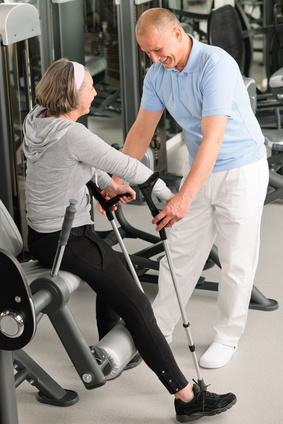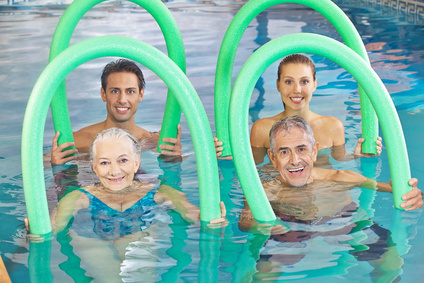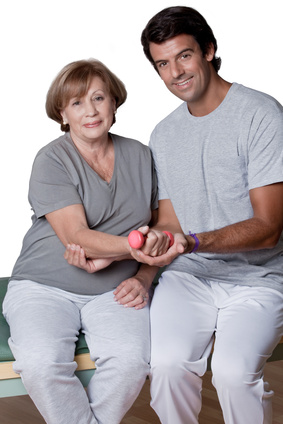|
Hello Everyone,
How many of you sit for hours everyday, whether at work or at home? Sitting for prolonged periods of time in poor posture, due to poor support or weak muscles, will surely lead to low back pain. To avoid the pitfalls of poor posture, take a look at this weeks newsletter. Great tips to be sure! Read up and may your entire spine benefit from this newsletter.
Have a great week!
God Bless,
Dan Bianco and Staff
Feel Better, Move Better, Live Better!
The TRUTH About Exercise After Injury
A physical therapist plays an important role in the recovery process following most injuries. With mother’s day round the corner, it’s important to remember that women in particular experience a higher risk from bone-related injuries after menopause. In this newsletter, we try to dispel some of the most commonly-held myths about post injury exercise regimes, so that the mothers (and everyone else) in your family are aware of the do’s and don’ts of post injury exercise.
 Myth #1: After an injury, “Bed rest is the best”. Myth #1: After an injury, “Bed rest is the best”.
Fact: A short period of bed rest (1 to 2 days) can help prevent further injury during the acute phase, but longer rest intervals can be counterproductive. In fact, resting and inactivity can actually cause more pain since a lack of activity leads to reduced blood flow and even muscle weakness. This, in turn, creates more pain and triggers an unhealthy cycle of pain and inactivity that feed each other and aggravate the situation.
Always start with low intensity exercises (your physical therapist will point you in the right direction) and ease into an exercise regime that progressively strengthens your muscles and improves flexibility of your joints.
Myth #2: Going to the gym is the best way to regain your strength.
Fact: It’s common for people to reinjure themselves if they return to the gym or engage in ‘unsupervised exercise’ too soon after an injury. Trust the expertise of the physical therapist and complete an exercise protocol before progressing to independent, unsupervised exercise.
Myth #3: With any exercise, if there is no pain, there is no gain.
Fact: When you first start an exercise plan, you’ll be using your muscles in new ways that may cause soreness the next day, but anything more than a little discomfort isn’t healthy. Contrary to popular belief, exercise doesn’t have to hurt to be effective. Pain is your body’s way of telling you that something’s wrong – if you want to avoid serious injury, listen to your body and back off at the first sign of pain.
Myth #4: Focusing on specific muscles (abs, arms, thighs) is the best way to recover after an injury.
Fact: The energy expenditure (amount of calories burnt) increases as you involve more muscle groups and increase the intensity of exercise. As healing continues, your physical therapist may recommend exercises like walking which involve several large muscle groups as opposed to single muscle group movements.
Aquatic Exercise Is Safe
 Exercise done in water (swimming pools) is effective for injury recovery in all age groups. Exercise done in water (swimming pools) is effective for injury recovery in all age groups.
The buoyant forces of water provide a calming, cushioning effect, which protects (and challenges) your muscles, joints and bones.
Water is several times denser than air and facilitates high energy expenditure with minimal risk of injury. Water exercise has several benefits and also provides a safe medium for strengthening your muscles post injury.
Exercise Techniques To Prevent Injuries
Your physical therapist can provide you with specific guidelines for injury free exercise, but here are a few tips:
 Dress appropriately. Replace worn-out shoes and wear the right clothing while exercising. This will reduce the rough impact on your joints and allow you to stay comfortable. Dress appropriately. Replace worn-out shoes and wear the right clothing while exercising. This will reduce the rough impact on your joints and allow you to stay comfortable.- Warm up and stretch. You should always start off with warm-up exercises, like walking on the spot for several minutes. Gentle stretching exercises after your warm up allow your muscles to get ‘primed’ for exercise
- Don’t forget to breathe! Deep, regular breathing can keep your heart rate steady and help maintain proper oxygen flow to your muscles. Never hold your breath while exercising. Your physical therapist will advice you when to breathe in and out while exercising.
- Technique and range of motion: Your physical therapist will teach you the correct technique, range of motion and speed to help you get the maximum benefit from each exercise.
- Cool down. At the end of your workout, decrease the intensity of your movements for at least 5 minutes, allowing your heart rate to return to normal.
Feel free to call our clinic to find out how you can keep your body healthy and prevent injuries.
Forward this Newsletter - Refer A Friend
|
|
Free 14-day trial at Total Rehab Fitness Center
With a FREE 14-day trial there is no reason not to get started on your exercise program.
Why wait!
What are you waiting for?
Check out the Fitness Centers group exercise classes!
Let the front desk attendant know you were a P.T. patient and get your special rate.
Check it out online at: biancosfit.com
|
|
Total Rehab Fitness Center
|
|